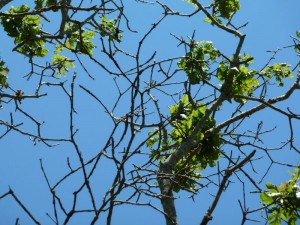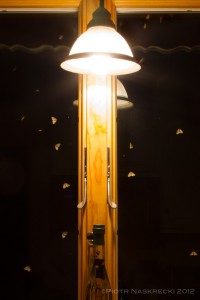Insect Threats
Cynipid Gall Wasp Information

Since 2009 the island of Martha’s Vineyard has had significant reports of Black Oak (Quercus velutina) being attacked by large populations of a Cynipid Wasp, (Bassettia ceropteroides), family Cynipidae. The intensity of these outbreaks has caused widespread mortality to black oaks with a particular pattern of attacking stressed trees, predominately mature trees that have suffered or had become predisposed by previous abiotic (environmental) or biotic (example – caterpillar defoliation) in previous seasons. Possible environmental factors include drought stress, storm damage (salt spray) and prior insect defoliation (fall canker work, spring canker worm, and winter moth.)
Wasps Infesting, Imperiling Area’s Black Oaks From Boston Globe, November 18, 2013
Crypt Gall Wasp article from Tree Care Industry, March 2013
Read more from the Cape Cod Times
The Cape Cod Cooperative Extension has published a very informative info sheet on the Cynipid Gall Wasp problem. View it here.
The wasp attacks the outer crown of black oaks indicating a preference for the soft new tissue of the previous seasons growth. Repeated attacks eventually result in tree mortality.
Winter Moth and Fall Cankerworm Information
Adult winter moths and fall cankerworms are most visible in the late fall and early winter. Over the past several weeks the adult moths have emerged from the ground and are mating. The males are winged and can be seen, especially at night, congregating around outdoor lights. The females are nearly wingless and with careful observation can be observed on tree trunks where they crawl around and lay their eggs.
Winter moth and fall cankerworm are two closely-related insects (see links for identification information), the former being an introduced pest and the latter a native insect. The larval (caterpillar) stage of each hatch in May from eggs being laid in winter; the caterpillars climb to the newly emerging leaves and feed voraciously. Oaks, maples, beeches, crabapples and other trees are favored food sources. These two insects caused major defoliation in successive years in the mid 2000’s and although their populations have been limited in recent years, winter moth “hot spots” do occur each year on the island and should be monitored. As with any insect pest, successful management relies on proper identification, an understanding of the life cycle and management options.
For more information go to:
Winter Moth Identification and Management